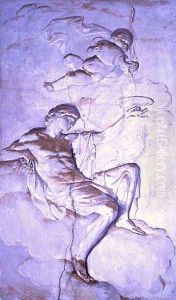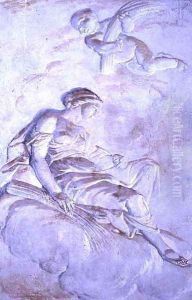Luigi Catani Paintings
Luigi Catani was an Italian painter and architect who was born in 1776 in Siena, Italy. His artistic journey began in his hometown, where he was initially instructed by the painter Raffaello Nasini. Catani later moved to Rome to further his education and career, where he became a student of the acclaimed painter and architect, Giuseppe Valadier. Under Valadier’s mentorship, Catani honed his skills in neoclassical design, which was the predominant artistic style of the late 18th and early 19th centuries.
Catani's work primarily revolved around architectural projects, interior decorations, and landscape paintings. His style was heavily influenced by the Neoclassical movement, which sought to revive the classical art and architecture of Ancient Greece and Rome. In Rome, he became part of the artistic circles that were at the forefront of this cultural revival. He worked on various projects, including the design of gardens, villas, and palaces, which often reflected the elegance and symmetry characteristic of the neoclassical aesthetic.
One of Catani's notable contributions was his work in the Palazzo del Quirinale in Rome, where he was involved in the decoration of several rooms. His architectural skills were also employed in the design of the Piazza del Popolo, one of Rome’s most famous squares. Catani's work was appreciated for its clarity of form, balanced proportions, and harmonious use of classical elements. He collaborated with other prominent artists and architects of his time, contributing to the transformation of the urban landscape of Rome during the early 19th century.
Tragically, Luigi Catani’s life and career were cut short when he died in 1819 at the age of 43. Despite his relatively short life, Catani left behind a legacy of work that captured the neoclassical spirit of his era. His contributions to architecture and design continued to influence future generations of Italian artists and architects. Although not as widely known as some of his contemporaries, Catani’s artistic output remains a testament to the enduring appeal of the neoclassical style in European art and architecture.


